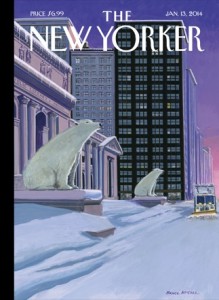Posted: January 25th, 2014 | No Comments »
This year we can obviously expect to hear a lot about the First World War. We’ll also be hearing something about the Chinese involvement in the European war through the men of the Chinese Labour Corps (the CLC or “Coolie Corps”), the Chinese recruited to help with logistics and clearing the battlefields by the British and French. I’ve blogged on the Coolie Corps before (here, here, here and here). I’ve also blogged about friend and veteran China hack Mark O’Neill who’s grandfather was a missionary in China and worked with the CLC – Mark has a short book on the CLC out this spring (more on that nearer the time).
Inevitably some of the Chinese men died at the Front and needed to be buried and then remembered after the war. The passage below is from the notes advising on how the graves of Chinese should be placed and handled in France issued in 1918. It comes from the superb and beautifully written history of the War Graves Commission and the man behind it Fabian Ware, Empire of the Dead: How One Man’s Vision Led to the Creation of WW1’s War Graves, by David Crane. I can’t recommend this book highly enough.
the way to bury the Chinese ideally,
“is on sloping ground with a stream below, or gully down which water always or occasionally passes. The grave should not be parallel to the north, south, east or west. This is especially important to Chinese Mohammedans. It should be about 4ft deep, with the head towards the hill and the feet towards the water. A mound of earth about 2ft high is piled over the grave…Whenever possible the friends of the deceased should be allowed access to the corpse, and should be allowed to handle it, as they like to dress it and show marks of respect.”
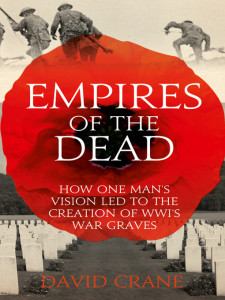
Posted: January 24th, 2014 | No Comments »
Sampans battened down for an incoming typhoon in Causeway Bay, Hong Kong….sorry – don’t have a date for this card
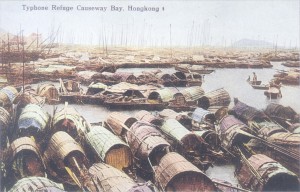
Posted: January 23rd, 2014 | No Comments »
I intend to get some more posts out of the 30th anniversary this year of the first publication of JG Ballard’s Empire of the Sun, but today, a selection of covers over the past three decades….






Posted: January 22nd, 2014 | 1 Comment »
Don’t often stick up pictures of cancelled postage but thought I’d offer this 1948 stamps, some of the last from the REpublic of China, featuring Sun Yat-sen and a nice contrast of old time junk and new fangled aeroplane. The issuing value of the stamps gives some idea of the crazy rates of inflation at the time. And that’s all my knowledge on stamps!


Posted: January 21st, 2014 | No Comments »
David Finkelstein’s Washington’s Taiwan Dilemma looks interesting…..
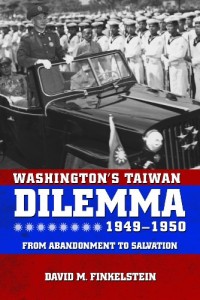
The declaration of the People’s Republic of China in October 1949 presented American foreign policy officials with two dilemmas: How to deal with the communist government on the mainland and what to do about Chiang Kai-shek’s Nationalist regime on Taiwan. By 1950, these questions were pressing hard upon U.S. civilian and military planners and policy makers, for it appeared that the Red Army was preparing to invade the island. Most observers believed that nothing short of American military intervention would preclude a communist victory. How U.S. officials grappled with the question of what to do about Taiwan is at the heart of “Washington’s Taiwan Dilemma” Today, U.S. policy toward Taiwan remains a highly-charged and fundamentally divisive issue in U.S.-China relations–especially the security dimensions of that policy. This volume is essential background reading for understanding the roots of this foreign policy dilemma.
Posted: January 17th, 2014 | No Comments »
Here today (a rather busy weekend ahead) simply a postcard of Shanghai “Harbour” taken around 1905 and posted in 1907
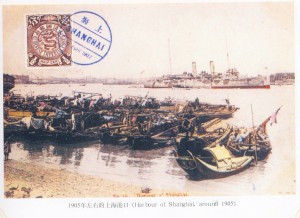
Posted: January 16th, 2014 | No Comments »
I came across a quirky little post the other day on the China Car Times blog concerning Chinese wheelbarrows. Chinese one wheeled wheelbarrows are indeed different from western style barrows. However, that reminded me of the drawings of Chinese wheelbarrows with sails and then John Milton.
Blind John Milton (1608-74) was born into the height of the Protestant Reformation in England. He clearly found what little news came from China interesting and wrote “Chinese drive, with sails and wind, their cany waggons light” in Paradise Lost (1667) indicating that the West knew of the sail driven wheelbarrows of China that William Alexander was to paint over a century later (below) in the 1790s when he saw them while accompanying Lord McCartney s Mission to China. Milton also noted the spice trade as well as the greatness of Beijing in Paradise Lost:
“City of old or modern fame, the seat
Of mightiest empire, from the destined walls
Of Cambalu, seat of Cathaian Can”
 Milton later refers to Pequin without apparently realising that both Pequin and Cambalu are alternative names for Beijing. It seems Milton was excited by China as a vast market for English manufacturing but criticised what he saw as the country s absolutist government which, in his mind, paralleled the absolutism of Catholicism and the Divine Right of Kings.

Â
Posted: January 15th, 2014 | No Comments »
I blogged rather a lot last year about Lao She thanks to the publication of Anne Witchard’s Lao She in London and then Penguin China’s reissuing of Lao She’s great novel of 1920s London, Mr Ma and Son. Somehow along the way I also penned a piece for the Los Angeles Review of Books about why Lao She never won a Nobel Prize too. Of course the Lao She story never ends well, but rather ends in the Cultural Revolution with Mao’s madness, denunciations and suicide. So China Rhyming readers may well be interested in the fascinating article in a recent issue of The New Yorker by their (now I think former) Beijing correspondent Evan Osnos on Confucianism. The article centres on the temple in Beijing where Lao She was bullied and beaten by Maoist Red Guards and deals, in part, with this awful event and the legacy of it for the temple. It’s not all available on line so you’ll have to track down a copy somehow I’m afraid….
